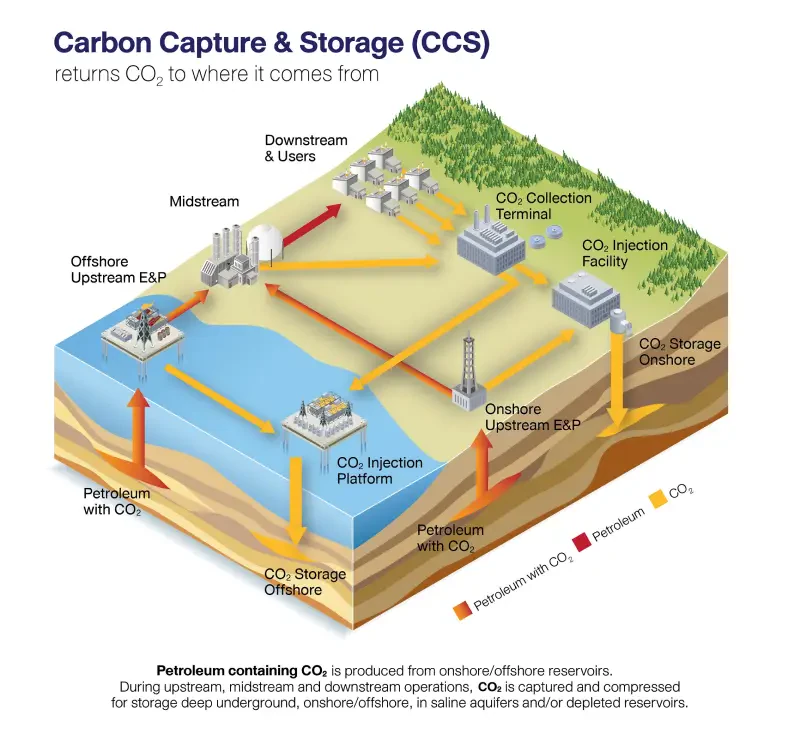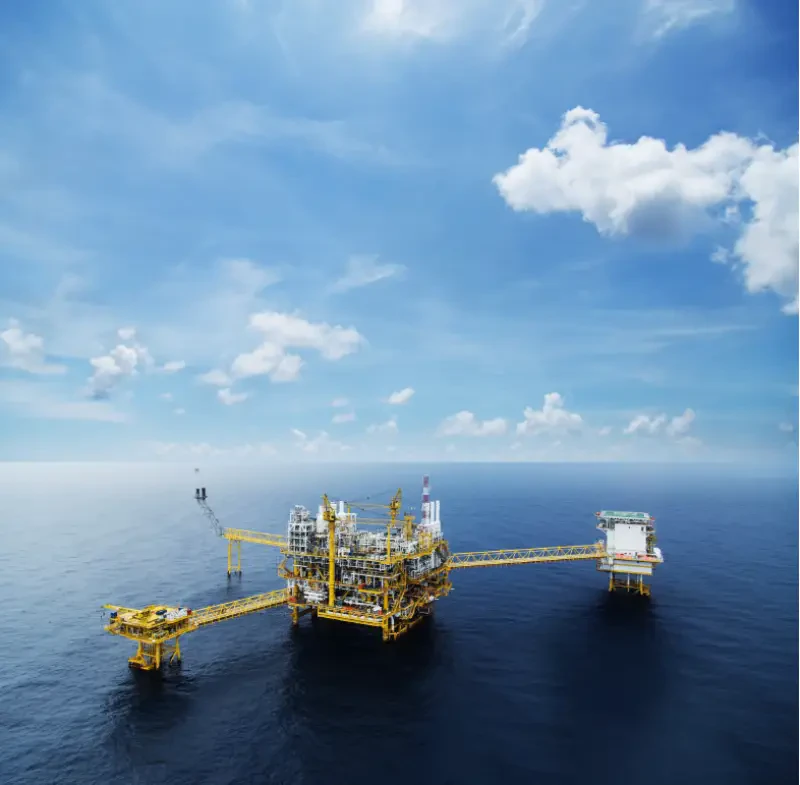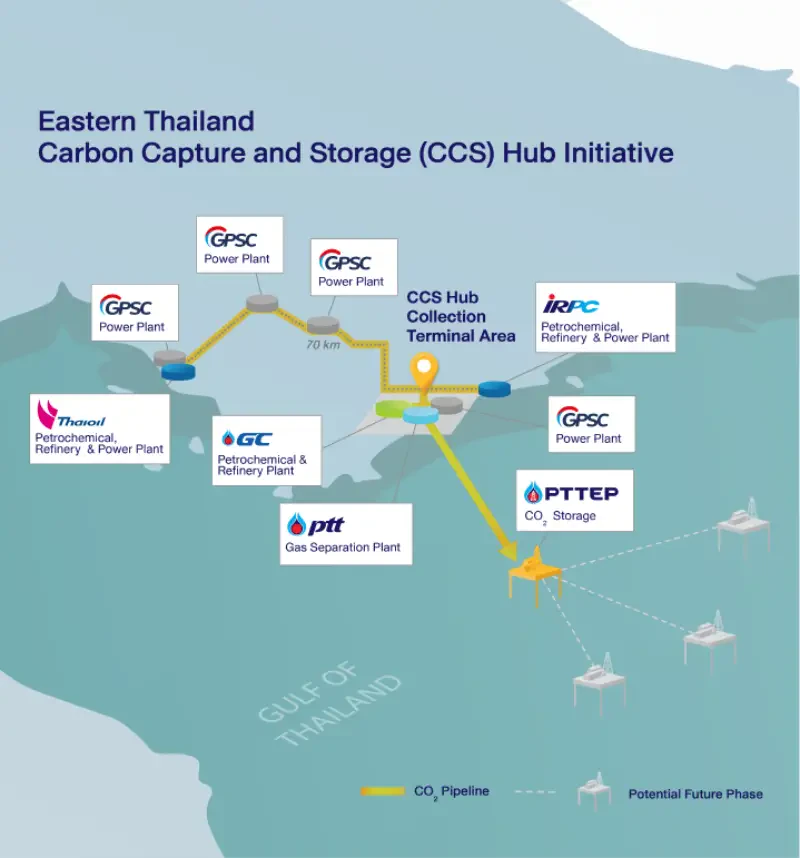
Special Feature
Carbon Capture and Storage Lights Decarbonization Pathway to Carbon Neutrality

By Mr. Nopasit Chaiwanakupt
Executive Vice President, Technology, Carbon Solutions, and Sustainable Growth Group
PTTEP
Energy is and will continue to be an essential part of our lives. Throughout our history - and thanks to the experience and learnings from historical energy crises - securing adequate energy supply (Reliable) at the right price (Reasonable) has always been one of the key objectives of the energy industry. Only by achieving such an objective will countries uninterruptedly support their infrastructure, ensure economic security, and promote the well-being of their citizens. In this regard, fossil fuels have undeniably been satisfying these conditions, albeit at the expense of carbon emissions. However, with the carbon footprint and climate change becoming global concerns, a shift in focus by the energy industry is imminent.
A recent study, “2022 Energy Transition Outlook”, by Wood Mackenzie1 shows that global primary energy demand will continue to grow as far as 2050 - with a notable change in the energy mix. A strong drive towards achieving net-zero emissions plays an important role in increasing “clean” energy contribution and reducing fossil fuel-based energy. This era of change we are experiencing is often referred to as the “Energy Transition”, which anchors on delivering energy that contributes to lower global-warming risk (Responsible) along the energy life cycle (starting from exploration & production to usage). With this third dimension, the focus of the energy industry has been shifted to give more value to the “cleanness” of energy. That is, the lower the carbon footprint an energy source is associated with, the more favorable it becomes.
The three dimensions (3Rs: Reliable, Reasonable, and Responsible) mentioned above signify three often conflicting challenges collectively called the “Energy Trilemma”. Specifically, today, the energy industry is faced with an important endeavor in striking the right balance to achieve energy security, affordability and sustainability. It is crucial to highlight the existing challenge in procuring adequate clean energy supplies to satisfy both small and large-scale energy demand. In this era of energy transition, it is thus vital to double-down and work to scale up clean energy production, while pursuing cleaner fossil fuels.
To realize this goal, two general approaches can be considered: 1) developing advanced technology to drive costs down – in tandem with scaling up the clean energy value chain via maximization of production and usage including derivatives such as green hydrogen, and 2) decarbonizing fossil fuel-based value chain via various emission-reduction technologies. The latter is the focus of this article, where we will delve into Carbon Capture & Storage (CCS), a technology central to the global decarbonization efforts for a cleaner fossil fuel-based value chain, and briefly discuss CCS roles and status in the context of Thailand.

CCS refers to a technological process, where CO2 is captured from various industrial sources, transported to desirable sites, and injected underground for permanent storage in suitable geological formations. In some way, it might be simpler to view CCS as a reverse of the current petroleum exploration and production (E&P) process, in which one tries to gather the byproduct CO2, properly improve its conditions, and return it to the subsurface where the carbon molecules originally come from. CCS is, hence, a means to close the loop and allow carbon molecules previously brought to the surface in the form of fossil fuels to be returned to the subsurface in a responsible and scientifically proven manner. Within this CCS value chain, the storage component is by far the most challenging piece of the puzzle because we need to consider not only the storage capacity, but also the storage integrity to ensure that CO2 can be properly injected and contained within the targeted rock formations. Moreover, we must also monitor and verify that the injected CO2 behaves and remains within the technical limits as carefully studied during the pre-injection period. As a result, it can be advantageous to build on existing tools, technologies and experiences from the E&P industry to help bring about successful development of CCS projects.
In view of global decarbonization expectation, the International Energy Agency (IEA) indicates that CCS will play a crucial role with up to 6.6 Gigatonnes (Gt) of decarbonization contribution in terms of capacity by 20702. Moreover, an additional 2.9 Gt is expected from CCS with CO2 from direct air capture (DAC) and bioenergy sources. Given these ambitious prospects, it is undeniable that CCS business needs to grow and continuously scale up in the foreseeable future. Recently, early positive signs can be seen from an increase in the number of announced CCS projects globally. The recent statistics from the Global CCS Institute (GCCSI) reveal that there are almost 400 CCS projects announced at both commercial and pilot scales worldwide3 with notable leaps in the number of projects in North America, Europe, and Asia Pacific regions. This growing global momentum is a signal that will unavoidably prompt Thailand and its local energy players to seriously consider and focus on the possibility of domestic CCS, while trying to take advantage of the existing E&P foundation in terms of both industrial infrastructure and human capital.
In the context of Thailand, the energy sector is always facing a primary dilemma of finding sufficient energy supply for the country at a reasonable cost. Given the latest commitment on decarbonization that the government has made (i.e. Carbon neutrality by 2050 & Net-zero greenhouse gas emissions by 2065), the Thai energy sector, which contributes to approximately 70% of the current national CO2 emission, is facing yet another daunting challenge that requires related parties to reduce their significant carbon footprint, while preparing for an ever-increasing domestic energy demand to safeguard national economic stability and growth. To address this challenge, the government has laid out a long-term plan for national decarbonization with estimated requirements from CCS at 40 Mtpa (Million tonnes per annum) by 2050 and 60 Mtpa by 2065. These two milestones represent the key targets that the Thai energy sector and relevant players must inevitably attempt to achieve. Thus, the earlier we can develop CCS projects, the better the chance we have of achieving those targets.

Recognizing this fact, PTTEP has launched internal studies on potential Thailand CCS initiatives with the goals of identifying hindering challenges from both techno-economic and regulatory perspectives, finding proper handling measures, and driving for effective mitigation to pave the way for future development of a sustainable Thai CCS value chain. By far, two initiatives are of notable criticality: 1) Arthit upstream CCS Project and 2) Eastern Thailand CCS Hub Project. The former represents the first national CCS pilot project, which can help to showcase Thailand’s CCS capability and storage potential. The project relies heavily on the existing E&P infrastructure (Gas processing platform) in the Gulf of Thailand to capture CO2 from E&P activities. The CO2 then gets transported to carefully chosen wellhead platforms via properly modified pipelines and reinjected into the subsurface within the Arthit concession area. Aiming to commence operation in 2027, the Arthit upstream CCS Project will reduce up to 1,000,000 tonnes of CO2 per year from domestic petroleum production process. The project signifies Thailand’s early decarbonization efforts and demonstrates that CCS is a feasible pathway for domestic decarbonization.

On the other hand, the Eastern Thailand CCS Hub Project aims at large-scale CCS implementation that supports long-term decarbonization of domestic industrial clusters along the East coast, particularly in the Eastern Economic Corridor (EEC). Conceptually, the CO2 emission collected from these industrial sources will be gathered at a central terminal before getting transported offshore for storage in the Gulf of Thailand. This model represents the so-called CCS hub, where multiple emitters can take advantage of a single Transportation & Storage (T&S) facilities for optimal financial benefits from economies of scale and reduced operational risks. Upon its successful development, the Eastern Thailand CCS Hub will become a national decarbonization infrastructure that can materially reduce industrial emissions and lead to future opportunities in a low-carbon economy in Thailand. Spearheaded by PTTEP – with our strong commitment – together with partners in PTT group, the first phase of the Eastern Thailand CCS Hub is expected to be operational by 2033 and will have a CO2 storage capacity of approximately 6 Mtpa.

Even though it is evident that CCS begins to garner a lot of interest, its development in Thailand is still at a nascent stage. Despite having a good technological foundation built on domestic E&P prowess and solid national goals on CCS requirements, the Thai CCS value chain is still facing key bottlenecks including unavailability of reliable storage estimates, gaps in regulations and supporting policies, and public’s unfamiliarity with this new technology. To ensure a timely deployment of CCS domestically and to improve the probability of achieving the national decarbonization targets, these hurdles must be concurrently addressed. Some key early activities that can help to overcome these difficulties include subsurface data acquisition for credible storage evaluation, regulation and supporting policy development to enable early project activities (e.g. data acquisition and study), and clarification for correct understanding on CCS. Only when these obstacles are well-recognized and seriously addressed, can CCS projects have a chance to see the light of day in Thailand.
References
- Wood Mackenzie (2022), Energy Transition Outlook, Wood Mackenzie, https://www.woodmac.com/reports/energy-markets-wood-mackenzies-2022-energy-transition-outlook-highlights-150071538/
- IEA (2020), CCUS in Clean Energy Transitions, IEA, Paris https://www.iea.org/reports/ccus-in-clean-energy-transitions, License: CC BY 4.0
- Global CCS Institute (2022), Facility Data, Retrieved from CO2RE Website: https://co2re.co/FacilityData